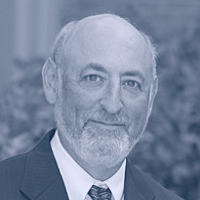After requiring all federal and state legislators and officers to swear or affirm to support the federal Constitution, Article VI specifies that “no religious Test shall ever be required as a Qualification to any Office or public Trust under the United States.” This prohibition, commonly known as the No Religious Test Clause, banned a longstanding form of religious discrimination practiced both in England and in the United States. In doing so, it provided a limited but enduring textual constitutional commitment to religious liberty and equality that has influenced the way Americans have understood the relationship between government and religion over the last two centuries.
In England, religious tests were used to “establish” the Church of England as an official national church. The Test Acts, in force from the 1660s until the 1820s, required all government officials to take an oath disclaiming the Catholic doctrine of transubstantiation and affirming the Church of England’s teachings about receiving the sacrament. These laws effectively excluded Catholics and members of dissenting Protestant sects from exercising political power. Religious tests were needed, William Blackstone explained, to protect the established church and the government “against perils from non-conformists of all denominations, infidels, turks, jews, heretics, papists, and sectaries.”
At the time the United States Constitution was adopted, religious qualifications for holding office also were pervasive throughout the states. Delaware’s constitution, for example, required government officials to “profess faith in God the Father, and in Jesus Christ His only Son, and in the Holy Ghost.” North Carolina barred anyone “who shall deny the being of God or the truth of the Protestant religion” from serving in the government. Unlike the rule in England, however, American religious tests did not limit office-holding to members of a particular established church. Every state allowed Protestants of all varieties to serve in government. Still, religious tests were designed to exclude certain people—often Catholics or non-Christians—from holding office based on their faith.
Today, nondiscrimination is an essential part of religious freedom, and it therefore may seem odd that the state laws and constitutions simultaneously imposed religious tests while also professing to protect religious liberty. Indeed, some critics, such as Thomas Jefferson, condemned religious tests as repugnant to freedom of conscience. But many Americans in the late 1700s and early 1800s apparently did not view religious tests and religious freedom as inherently contradictory. Some argued that religious tests did not violate freedom of religious conscience because no one had an obligation or entitlement to hold public office. Office-holding, in other words, was a privilege, not a right. Americans thus allowed minority religions to practice their faith while insisting that government power must be reserved for and could only be trusted to Protestants.
Notwithstanding this almost unanimous state consensus, the Framers of the federal Constitution prohibited religious tests for federal office-holding. It is not clear why they did so. There is little record of debate about this provision or discussion as to its merits at the constitutional convention. We do know that the ban on religious tests was controversial during the ratification debates, sometimes evoking passionate criticism of its inclusion in the Constitution. It was elementary to some opponents of the ban that “a person could not be a good man without being a good Christian.” Even as prominent a proponent of ratification as John Jay had demonstrated strong support for the use of religious tests within his own state.
Supporters of the Constitution defended the prohibition against test oaths as advancing religious freedom and protecting less politically powerful faiths against discrimination. They also argued that laws requiring religious tests were futile. Men without principles would easily evade the laws’ purpose through sham compliance while honest men who followed the dictates of their conscience would be barred from office. The difficult question was how these arguments could be reconciled with the widespread acceptance of religious tests throughout the states.
There is very little case law interpreting the No Religious Test Clause. The foundational ideas of religious liberty and equality, which are intrinsic to the rejection of religious tests, have been developed far more fully in cases interpreting the Free Exercise Clause and the Establishment Clause of the First Amendment. Thus, the Supreme Court has never held that the Clause applies to state as well as federal office-holding. In other words, unlike most parts of the Bill of Rights, the ban on religious tests has not been formally applied against the states (or “incorporated”) under the Fourteenth Amendment. But in Torcaso v. Watkins (1961), the Supreme Court unanimously held that religious tests for state office-holding violate the religion clauses of the First Amendment. “[N]either a State nor the Federal Government can constitutionally force a person ‘to profess a belief or disbelief in any religion,’” the Court declared. “[N]either can constitutionally pass laws or impose requirements which aid all religions as against non-believers, and neither can aid those religions based on a belief in the existence of God as against those religions founded on different beliefs.”
In a related case, McDaniel v. Paty (1978), the Supreme Court invoked the First Amendment to strike down state laws prohibiting clergy from holding office. Such a disqualification from holding office, the Court explained, unacceptably abridged religious liberty. Here again, the fact that these religion-related exclusions were adopted by many states both before and after the Constitution’s ratification did not persuade the Justices that such burdens on religious liberty were permissible.
As is true of virtually all constitutional provisions, the No Religious Test Clause in Article VI only restricts governmental action. Private citizens do not violate the Constitution if they vote against a political candidate because of his or her religion. A harder question, which has provoked considerable contemporary debate, is whether the Clause extends beyond a ban against oaths and prohibits government officials from taking the religious views of an individual into account in selecting or confirming that individual for a federal position—such as an appointment to the Supreme Court.






